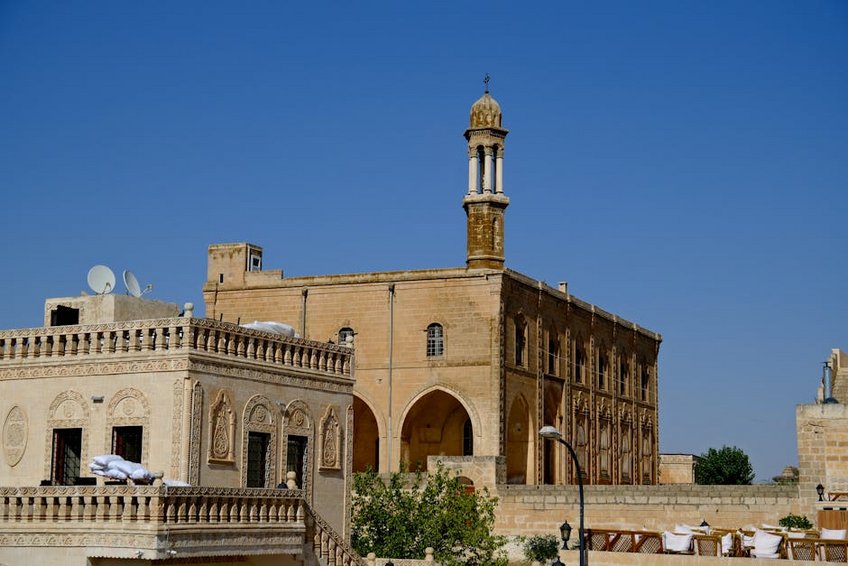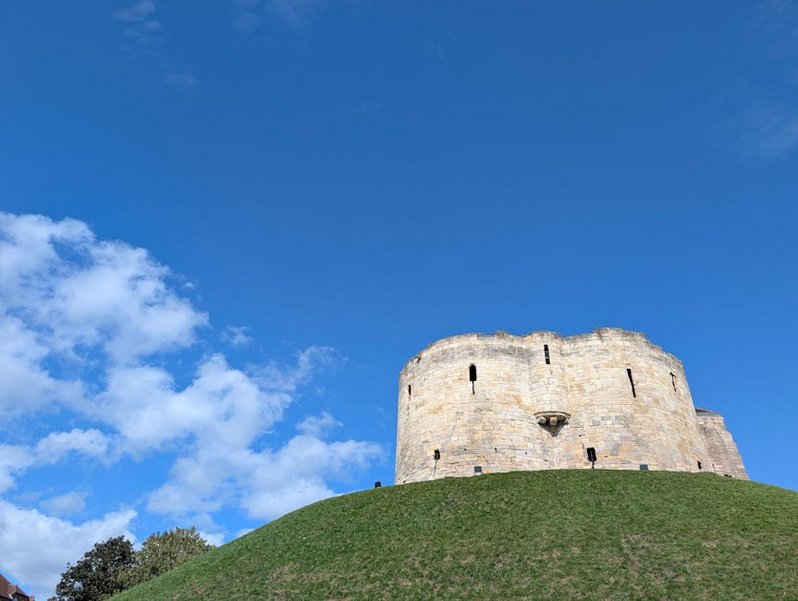Pergamon Ancient City: A Journey Through Hellenistic Grandeur
Stepping into Pergamon Ancient City feels like opening a living history book where every stone whispers tales of Hellenistic kings, Roman emperors, and brilliant scholars. This magnificent archaeological site in modern-day Turkey offers one of the most complete and dramatic ancient urban experiences you’ll find anywhere in the Mediterranean. As you explore the steep terraces and reconstructed monuments, you’ll understand why Pergamon became a UNESCO World Heritage Site and why it captivated civilizations for millennia. The acropolis perched dramatically on a hilltop, the steepest theater of the ancient world, and the legacy of parchment invention create an unforgettable journey through time. Whether you’re a history enthusiast, architecture lover, or simply seeking awe-inspiring landscapes, Pergamon Ancient City delivers an experience that transcends typical tourist destinations and connects you directly with the ancient world’s intellectual and cultural achievements.
Pergamon Ancient City Essential Information – Historical Context and Significance
Pergamon Ancient City emerged as a major power during the Hellenistic period following Alexander the Great’s death, reaching its zenith under the Attalid dynasty in the 3rd and 2nd centuries BCE. What makes this site extraordinary is how completely it represents Hellenistic urban planning, architecture, and cultural sophistication. The Attalids transformed Pergamon into a capital that rivaled Alexandria and Antioch, creating a cultural and political hub that later impressed the Romans enough to make it the capital of their Asian province. The city’s most famous contribution to civilization might be parchment (charta pergamena), developed when the Ptolemaic dynasty in Egypt embargoed papyrus exports. The Great Altar of Zeus, now reconstructed in Berlin’s Pergamon Museum, represents one of ancient Greece’s most magnificent sculptural achievements. As you walk through the site, you’re tracing the footsteps where medicine advanced at the Asclepieion, where great libraries competed with Alexandria, and where architectural innovations influenced Roman construction for centuries.
Historical Timeline – Key Periods and Events
- 3rd Century BCE: Attalid dynasty establishes Pergamon as independent kingdom, beginning golden age
- 2nd Century BCE: Construction of Great Altar of Zeus, Library of Pergamon, and major architectural projects
- 133 BCE: Last Attalid king bequeaths kingdom to Rome, beginning Roman period
- 2nd Century CE: Roman expansion and renovation under Hadrian and Trajan
- Byzantine Era: Transition to Christian center with basilica construction
- Budget travelers can manage for $35-50/day including entrance fees, local transportation, and simple meals
- Mid-range visitors should budget $75-100/day adding guided tours, better restaurants, and taxi transportation
- Luxury experiences range $150-200/day with private guides, premium accommodations, and fine dining
- Turkish Ministry of Culture and Tourism Official Site
- UNESCO World Heritage Centre Pergamon Listing
Archaeological Significance – Why It Matters Today
Pergamon Ancient City represents a rare example of well-preserved Hellenistic urban planning that influenced Roman architecture. The site’s excavation, beginning with German archaeologists in the late 19th century, revealed revolutionary findings about ancient urban design, religious practices, and cultural exchange. The steep theater terrace construction, the sophisticated water management system, and the medical advancements at the Asclepieion provide invaluable insights into ancient engineering and science. Today, ongoing excavations continue to reveal new aspects of daily life, trade relationships, and artistic achievements that make Pergamon a living laboratory of ancient Mediterranean civilization.

Pergamon Ancient City Planning Your Trip – Practical Preparation Guide
Planning your visit to Pergamon Ancient City requires some strategic thinking due to the site’s extensive layout and challenging terrain. The archaeological site divides into three main areas: the Acropolis on the hilltop, the Asclepieion (healing center) at the base, and the Red Basilica in modern Bergama town. You’ll want to allocate a full day to properly explore all sections without rushing, though the main acropolis can be covered in 3-4 hours if time is limited. Summer months bring intense heat, making early morning or late afternoon visits more comfortable, while spring and autumn offer ideal temperatures for climbing the steep paths. Wear sturdy walking shoes with good grip, bring sun protection, and carry sufficient water as facilities are limited on the acropolis. The site’s dramatic elevation changes mean you’ll be climbing steep ancient pathways, so physical preparation is important for those with mobility concerns.
Best Time to Visit Pergamon Ancient City
The optimal visiting period for Pergamon Ancient City spans from mid-April through June and September to October, when temperatures range from 65-80°F (18-27°C) with minimal rainfall. These conditions make climbing the steep acropolis comfortable while providing excellent visibility for photography. July and August bring extreme heat often exceeding 95°F (35°C), making midday exploration challenging though early mornings remain pleasant. Winter months from November to March see cooler temperatures 40-55°F (4-13°C) with higher rainfall, but you’ll experience minimal crowds. The site opens daily from 8:30 AM to 7:30 PM in summer (April-October) and 8:30 AM to 5:30 PM in winter, with last entry one hour before closing.
Budget Planning and Costs
Essential Preparation Checklist
Before visiting Pergamon Ancient City, ensure you have comfortable walking shoes with excellent grip for the marble and stone surfaces that become slippery. Pack a daybag with sunscreen, hat, and at least 1 liter of water per person as the acropolis offers limited shade and no water stations. Bring cash in Turkish Lira for entrance fees, as credit cards aren’t always accepted, and smaller denominations help with purchases at local vendors. Download offline maps or navigation apps since cell service can be inconsistent on the hilltop, and consider purchasing the Museum Pass Aegean if planning to visit multiple archaeological sites in western Turkey. Check the official website for any temporary closures or special events that might affect your visit.
Pergamon Ancient City Top Attractions and Activities – Must-See Highlights
Exploring Pergamon Ancient City reveals layer upon layer of historical treasures, each more impressive than the last. The acropolis crowns the experience with its breathtaking hilltop location offering panoramic views of the surrounding valley. The Theatre of Pergamon will leave you speechless with its 10,000-seat capacity carved directly into the steep hillside at a 70-degree angle—the steepest known theatre in the ancient world. The Temple of Trajan demonstrates Roman architectural precision with its Corinthian columns partially reconstructed to help visualize the original grandeur. The legendary Library of Pergamon, though mostly foundations today, sparks imagination about the 200,000-volume collection that rivaled Alexandria’s library. The Asclepieion medical complex at the base of the hill showcases ancient healing practices with its sacred spring, tunnel access to treatment rooms, and temple to Asclepius. Don’t miss the Red Basilica in Bergama town, a massive Roman temple later converted into a Byzantine church.
Must-See Highlights – Architectural Marvels
The Theatre of Pergamon represents perhaps the most dramatic ancient theater setting you’ll ever experience, with its 80 rows of seating climbing the hillside at an astonishing angle. The Great Altar of Zeus’s original site, though the structure itself resides in Berlin, still impresses with its monumental foundation and remaining decorative elements. The Gymnasium complex reveals three levels of education and training facilities that served different age groups, showing the sophisticated social structure of Hellenistic society. The Temple of Dionysus with its partially standing columns and dramatic location offers perfect photo opportunities, especially during golden hour. The Roman aqueduct system and sophisticated water storage demonstrate engineering brilliance that supported a city of 200,000 people at its peak.
Hidden Gems and Local Favorites
Beyond the main attractions, seek out the lesser-known Heroön, a sanctuary dedicated to the deified rulers of Pergamon that features beautiful mosaic remnants. The Upper Agora provides a quieter space to imagine ancient market life with its stunning valley views and remains of surrounding stoas. The Arsenal area reveals the military preparedness of the Attalids with storage chambers and defensive walls that protected the city’s northern approach. Local guides often point out the ancient sewer system openings, demonstrating the advanced urban infrastructure that included running water and waste management. In modern Bergama, the Archaeology Museum houses fascinating artifacts from the site, including beautiful sculptures and everyday objects that bring ancient daily life into focus.
Pergamon Ancient City Practical Travel Information – Transportation and Accommodation
Reaching Pergamon Ancient City requires some planning as it’s located near modern Bergama, about 62 miles (100 km) north of Izmir. Most international travelers fly into Izmir Adnan Menderes Airport (ADB), which receives direct flights from major European cities and connections through Istanbul. From Izmir, regular buses depart from the main bus terminal to Bergama every 30-60 minutes, taking approximately 1.5-2 hours. Once in Bergama, the acropolis sits 4 miles (6 km) northeast of town center, accessible by taxi, dolmuş (shared minibus), or a challenging but rewarding hike for fit travelers. The Asclepieion and Red Basilica are within walking distance of the town center. Accommodation options range from basic pensions in Bergama to more comfortable hotels, though many visitors choose to base themselves in Izmir or Çeşme and visit as a day trip.
| Category | Options/Features | Price Range (USD) |
|---|---|---|
| Budget Accommodation | Local pensions, basic hotels in Bergama center | $25-40/night |
| Mid-Range Hotels | Comfortable hotels with AC, breakfast included | $50-80/night |
| Luxury Options | Boutique hotels, resorts in Izmir/Çeşme area | $100-200/night |
| Transportation | Taxi from Bergama to acropolis, rental car options | $10-15/ride |


